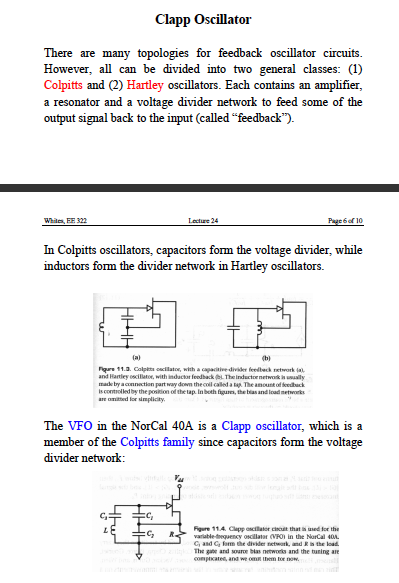Follow along with the video below to see how to install our site as a web app on your home screen.
Note: This feature may not be available in some browsers.
Some points why the calculation isn't right.RE(total) = RE + re = 1500+26 = 1526 ohm
RB = R2//R4//(beta*[re+RE])= 14.5 kohm.
Hi samy,
I suppose you are aware that you make use of the configuration in Fig. 2.18-A .
Yes, you're rightSome points why the calculation isn't right.
- output impedance of common collector circuit (for shorted input), you call it RE(total), is RE || re ≈ re
Yes, you're right. Although I read # 7 and well-screened, but I rushed when I saw the book.- beta at 148 MHz isn't equal betaDC. According to fT of 300 MHz, it's only about 2. The problem has been addressed in post #7.
I frankly do not understand very well what LvW tried to say, if necessary I hope larger and step by step- amplifier input and output impedance, load and source resistance are strongly mutually dependent in the CC circuit. That's a reason, why "impedance matching" doesn't achieve results representative for the circuit operation. Analyzing the circuit as CB with virtual ground, as suggested by LvW, gives a better decoupling of both amplifier ports.
YesImpedance matching isn't a bad design idea, when the amplifier power gain is small and must be well utilized to get the oscillator working at all. But it must consider the actual frequency dependent transistor parameters.
At frequencies with a sufficient gain margin, impedance matching isn't the right concept to design an oscillator feedback path.
I guess there's certainly a not complicated solution
I will leave the next step to you
Some points why the calculation isn't right.
- output impedance of common collector circuit (for shorted input), you call it RE(total), is RE || re ≈ re
I frankly do not understand very well what LvW tried to say, if necessary I hope larger and step by step
explain I will try it.
First, thank you for VideosAs you said, you're tired of books and articles.
Formulas can only take us so far.
Of course the reality came first. Later came the math.
As for the concepts of operation, these are not so easy to grasp.
Simulations have become extremely useful in this area.
I will do my best in the following discussions that take these tips into considerationRecommendation to samy:
1.) Please explain all calculations and symbols in order to avoid misunderstandings (wasting of time).
2.) Distinguish between static/ohmic resistors (large symbols R) and dynamic resistances (small symbols r).
It's true, that the original circuit also covers the clapp oscillator option by making C0 small and constituating a series LC resonantor. But it has been clarified from the start that C0 is sufficient large to act as a DC block only.
Functionally, series resonant clapp and parallel resonant colpitts circuit are sufficiently different to distinguish them in the discussion. The exact analysis of the colpitts circuit is already demanding enough.
I'm somewhat surprized, that the circuit under discussion has been repeatedly associated with the clapp oscillator topology.
